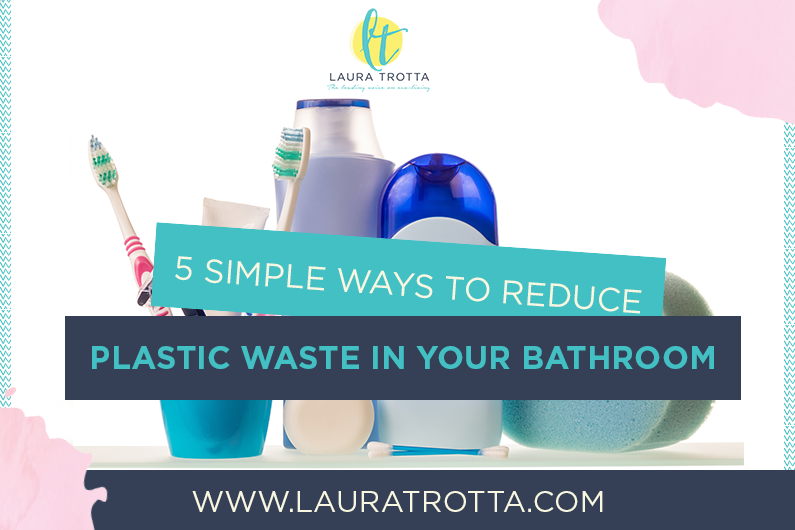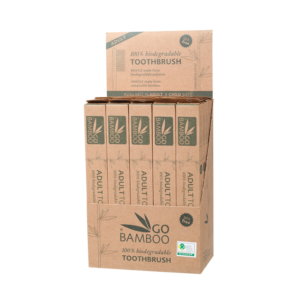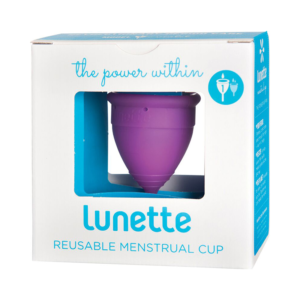Our bathrooms often fly under the radar where plastic waste is concerned. Instead we focus on reducing plastic waste when we’re out and about by carrying a reusable coffee cup, reusable shopping bags or even a reusable straw.
However there are some sneaky plastics that have made their way into our bathrooms.
Whether it’s the innocent plastic wrap around a tampon, the hearty plastic toothbrush or the more concealed microscopic plastic beads in beauty products, our bathrooms punch above their weight in our overall plastic waste footprint.
In this article I share five simple ways to reduce plastic waste in your bathroom.
Podcast: Play In New Window
What Are Plastics?
Plastics are material consisting of a wide range of synthetic or semi-synthetic organics. Typically made from petrochemicals (a non-renewable resource), the many benefits of plastic have contributed to its popularity.
Plastic is cheap and easy to manufacture, versatile, impervious to water and can be re-moulded into solid objects of diverse shapes over and over again (unlike natural products such as wood and horn).
Why Reduce Plastic Waste?
One of the things we love about plastics (their durability) is one of the main reasons they’re so detrimental in the environment – and that’s the fact that they persist!!!
Whether it’s plastic bags that are eaten by turtles mistaking them for jellyfish, or microscopic beads of plastic from beauty products contaminating our waterways, our oceans are littered with plastic, and it’s having a massive impact.
One of the problematic properties of plastic is that it’s not biodegradable; it literally lasts forever.
While plastic does not biodegrade, it does photodegrade: UV light from the sun breaks the plastic down into ever-smaller pieces of plastic known as microplastics.
These microplastics continue to photodegrade into smaller and smaller pieces, but they always remain what they are….plastic…. just smaller pieces that are increasingly harder to clean up.
Scientists have reported that over 90% of the plastic polluting our oceans is made up of microplastics smaller than your fingernail. This photodegradation continues right down to the microscopic level, where we can’t even see the individual pieces of plastic with the naked eye. What we do see is a viscous toxic sludge where water should be. Plastic in our oceans has changed from rubbish washing up on deserted beaches to the issue of microplastics changing the chemical composition of our oceans as a whole.
These microplastics act like sponges. They soak up and retain all kinds of toxic chemicals, such as DDT and PCBs. Unable to distinguish their food from microplastics, many marine animals end up dying with bellies so full of plastic that no food can pass through them. They can literally starve to death with full stomachs.
If these marine animals survive to be consumed by humans, the plastic they’ve consumed, and the toxins they’ve absorbed, end up directly in our food chain.
The prevalence of plastics in our environment has been linked to many human health issues including obesity, early adolescence, infertility and cancer. Plastics are not just impacting our environment. Because we’re part of the environment, they’re impacting us too!
Five Simple Ways To Reduce Plastic Waste In The Bathroom
So you’re fired up and ready to reduce your plastic waste? Great!
Here’s how you can get started and reduce plastic waste in your bathroom.
1. Rethink Your Razor
If you shave, ditch the disposable razor and opt for varieties where you can replace the head instead. Alternatively invest in a rechargeable razor or hair epilator or wax using cotton, reusable strips.
2. Choose a Biodegradable Toothbrush
More than 30 million plastic toothbrushes are disposed to landfill in Australia each year! Swap your regular plastic toothbrush for a biodegradable toothbrush made from cornstarch or bamboo.
3. Switch To Reusable Menstrual Products
Similar to nappies, single-use sanitary pads contain plastic and take years to break down in landfill. Tampons are individually wrapped in plastic, which means even if you use these you’re still consuming plastic every cycle. Choosing reusable cloth pads or a silicone menstrual cup over conventional menstrual products is not only better for the environment, it’s a big win for your health and wallet too!
Click here to learn how to use a menstrual cup.
4. Boycott the Bead
Microbeads are tiny pieces of plastic ranging in size from 5 um to 1000 um (1mm) in size. They’re found in beauty products like facial and body scrubs and even some toothpastes, where their purpose is to provide a grainy texture for exfoliation. These tiny beads of plastic create havoc in our waterways where they’re ingested by small marine life.
Microbeads are commonly made from the following substances, so to boycott the bead, look for these ingredients on the back of the product:
- Polyethylene (PE)
- Polypropylene (PP)
- Polyethylene terephthalate (PET)
- Polymethyl methacrylate (PMMA)
- Nylon (PA)
Luckily, the folks at Beat the Microbead have made an app to help you find out if these tiny pollutants are in your favourite products. You can download the app and scan the product barcode and it will tell you if the product contains microbeads.
5. Make Your Own Toiletries
The best way to boycott the bead is to choose natural, organic body and beauty products or learn to make your own from pure, raw ingredients.
If you’re feeling like going the extra mile and breaking up with commercial shampoos, conditioners, body washes and even deodorants, you might like to have a try and making your own plastic-free versions. I include many recipes in my Home Detox Boot Camp but here’s how you can get started with a natural shampoo and conditioner….
No ’Poo Method
Mix 1 tablespoon baking soda (sodium bicarbonate) and 1 cup water together until the baking soda is fully dissolved and the water is slightly cloudy.
Apply the mixture to your hair focussing on your roots and working it in with your fingers and distributing throughout the rest of your hair. Rinse.
Apple Cider Conditioner
Mix 1 tablespoon of apple cider vinegar with 1 cup of water. Apply to your hair, working the mixture in as you did with the shampoo and rinse thoroughly.
Final Thoughts
A plastic-free bathroom is possible. By actioning the tips above and making the switch to eco-friendly alternatives, you’ll reduce your plastic waste, enjoy both health and environmental benefits and help create a more sustainable future for all.
Keen to learn my best tips on how to reduce your plastic waste? Click HERE to join my FREE 5-day Plastic Free Challenge.
Like this Post?
You may also like:
What You Need To Know About Plastics
What Are Microbeads and What Impact Are They Having On The Environment?
19 Ways To Break Up With Plastic In Your Home
Where Reduce Reuse Recycle Got It Wrong
3 Plastic Habits To Kick To Improve the Environment
How Our Plastic Oceans Are Impacting the Environment with Craig Leeson
Podcast: Play in new window | Download
- Sustainable Home Design- factors to consider to maximise sustainability - July 28, 2022
- Advantage and Disadvantages of Tiny Houses - May 31, 2022
- How School Strike 4 Climate is Empowering Youth to Fight for Their Future - May 1, 2022





 Laura Trotta is one of Australia’s leading home sustainability experts. She has a Bachelor of Environmental Engineering, a Masters of Science (in Environmental Chemistry) and spent 11 years working as an environmental professional before creating her first online eco business, Sustainababy, in 2009. She has won numerous regional and national awards for her fresh and inspiring take on living an ‘ecoceptional’ life (including most recently winning the Brand South Australia Flinders University Education Award (2015) for the north-west region in SA and silver in the Eco-friendly category of the 2015 Ausmumpreneur Awards). With a regular segment on ABC Radio and with her work featured in publications like Nurture Parenting and My Child Magazine, Laura is an eco thought leader who’s not afraid to challenge the status quo. A passionate believer in addressing the small things to achieve big change, and protecting the planet in practical ways, Laura lives with her husband and two sons in outback South Australia.
Laura Trotta is one of Australia’s leading home sustainability experts. She has a Bachelor of Environmental Engineering, a Masters of Science (in Environmental Chemistry) and spent 11 years working as an environmental professional before creating her first online eco business, Sustainababy, in 2009. She has won numerous regional and national awards for her fresh and inspiring take on living an ‘ecoceptional’ life (including most recently winning the Brand South Australia Flinders University Education Award (2015) for the north-west region in SA and silver in the Eco-friendly category of the 2015 Ausmumpreneur Awards). With a regular segment on ABC Radio and with her work featured in publications like Nurture Parenting and My Child Magazine, Laura is an eco thought leader who’s not afraid to challenge the status quo. A passionate believer in addressing the small things to achieve big change, and protecting the planet in practical ways, Laura lives with her husband and two sons in outback South Australia. 


